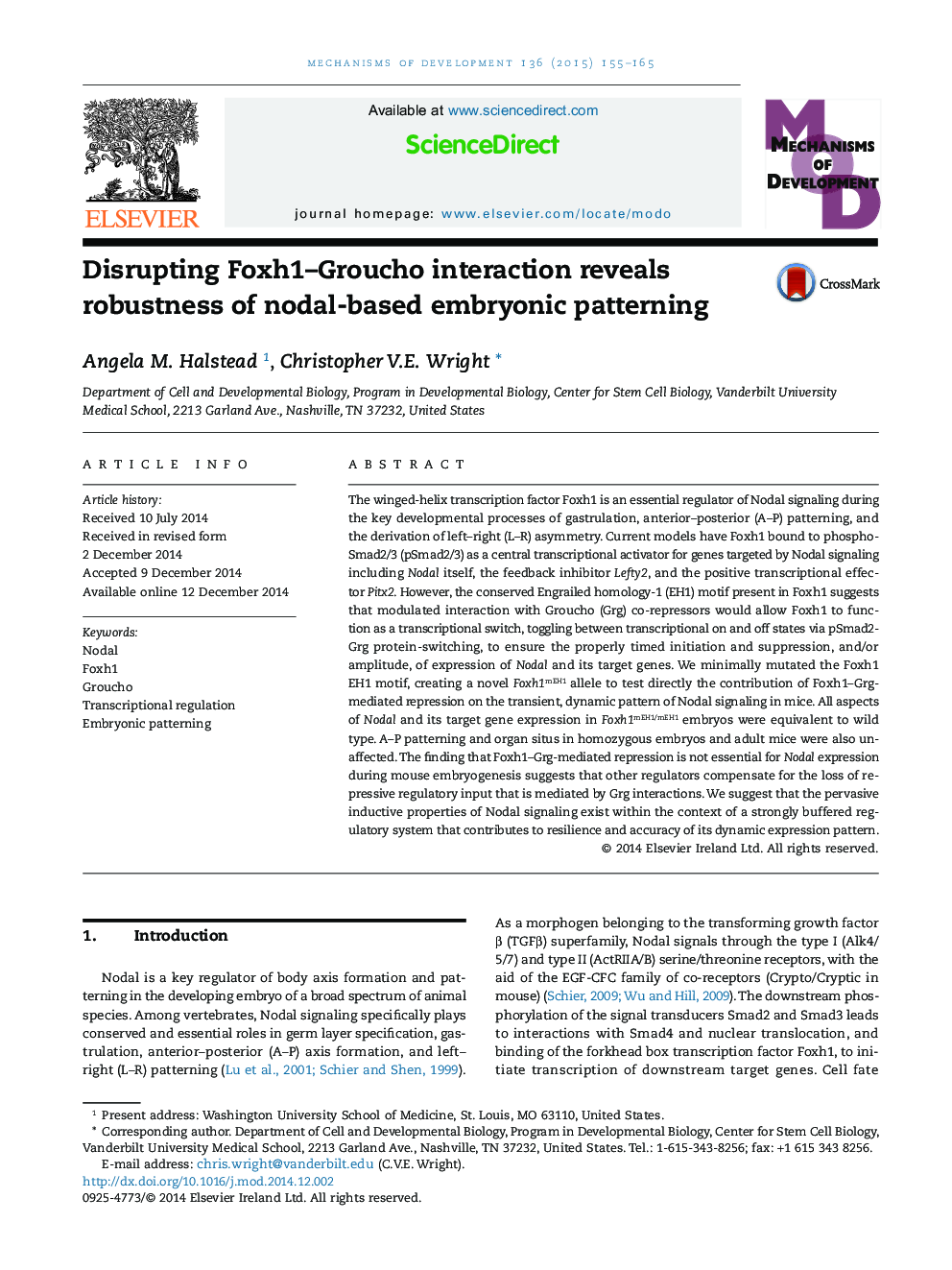| Article ID | Journal | Published Year | Pages | File Type |
|---|---|---|---|---|
| 2194619 | Mechanisms of Development | 2015 | 11 Pages |
•Foxh1-mediated repression of Nodal in gastrulation, left–right asymmetry addressed in mouse.•Grg-binding motif (EH1) in Foxh1 altered to block Groucho (Grg) interaction.•EH1 mutation greatly disrupts Foxh1 binding to Grg co-repressors.•Disrupting Foxh1–Grg interaction does not alter Nodal expression or embryogenesis.•Buffered regulatory system likely compensates for reduced Foxh1–Grg binding.
The winged-helix transcription factor Foxh1 is an essential regulator of Nodal signaling during the key developmental processes of gastrulation, anterior–posterior (A–P) patterning, and the derivation of left–right (L–R) asymmetry. Current models have Foxh1 bound to phospho-Smad2/3 (pSmad2/3) as a central transcriptional activator for genes targeted by Nodal signaling including Nodal itself, the feedback inhibitor Lefty2, and the positive transcriptional effector Pitx2. However, the conserved Engrailed homology-1 (EH1) motif present in Foxh1 suggests that modulated interaction with Groucho (Grg) co-repressors would allow Foxh1 to function as a transcriptional switch, toggling between transcriptional on and off states via pSmad2-Grg protein-switching, to ensure the properly timed initiation and suppression, and/or amplitude, of expression of Nodal and its target genes. We minimally mutated the Foxh1 EH1 motif, creating a novel Foxh1mEH1 allele to test directly the contribution of Foxh1–Grg-mediated repression on the transient, dynamic pattern of Nodal signaling in mice. All aspects of Nodal and its target gene expression in Foxh1mEH1/mEH1 embryos were equivalent to wild type. A–P patterning and organ situs in homozygous embryos and adult mice were also unaffected. The finding that Foxh1–Grg-mediated repression is not essential for Nodal expression during mouse embryogenesis suggests that other regulators compensate for the loss of repressive regulatory input that is mediated by Grg interactions. We suggest that the pervasive inductive properties of Nodal signaling exist within the context of a strongly buffered regulatory system that contributes to resilience and accuracy of its dynamic expression pattern.
